In today’s world, we face big challenges like climate change, food security, and economic worries. Homesteading is becoming more popular in America as a way to live self-sufficiently. But what is homesteading, and why is it attracting so many people? Let’s explore this modern movement and see how it can change your life.
Key Takeaways
- Homesteading is a lifestyle centered around self-sufficiency and resourcefulness, where individuals actively produce food and conserve resources.
- The concepts of homesteading can be applied in diverse living situations, from urban to rural settings.
- Homesteading offers benefits such as food security, sustainability, financial savings, and personal well-being.
- Homesteading requires a commitment of time, space, and financial investment, but can be a rewarding and fulfilling lifestyle choice.
- Consulting with professionals is essential when planning a homesteading journey, as it can impact insurance, mortgages, and property considerations.
What is Homesteading?
Homesteading is all about living a self-sufficient life. It means you take charge of making your own food and saving resources. This way, you live more independently and help the planet. Historically, homesteading is linked to farming. But now, it’s about many different ways to live, even in cities.
This change makes homesteading a flexible choice for anyone. You can bring homesteading into your life, no matter where you live.
Defining Homesteading and Its Evolution
The story of homesteading starts with the Homestead Act of 1862. This act gave land to those who would work it. Over time, homesteading changed. It was big in the Subsistence Homesteading program during the 1930s and 1940s under President Franklin D. Roosevelt.
By the 1960s, the idea of modern homesteading became popular. It spread to cities and suburbs, becoming urban homesteading.
- The Homestead Act started in 1862 in the United States.
- Homesteading was part of President Franklin D. Roosevelt’s Subsistence Homesteading program in the 1930s and 1940s.
- The modern homesteading movement became popular in the 1960s in the United States.
- In the 1990s and 2000s, self-sufficiency spread to cities and suburbs, known as urban homesteading.
The lifestyle of homesteading comes with its challenges. For example, dealing with chicken illnesses shows the real-life struggles of keeping a homestead.
Benefits and Challenges of Homesteading
Homesteading brings many benefits for those wanting a self-sufficient life. A big plus is food security. Homesteaders work to meet all their basic needs like food, water, and shelter on their own. Many grow and store most of their own food, cutting down on global food system reliance.
There’s also a chance to save money. Homesteaders often use renewable energy like solar power, lowering their bills. They also engage in small-scale production, gaining financial independence. Some even run seasonal businesses, like hostels, to make ends meet during summer.
Homesteading boosts health and well-being. The hard work, fresh food, and nature connection help keep homesteaders healthy.
But, homesteading comes with challenges. It takes a lot of time, space, and learning. Rules and zoning laws can also limit what homesteaders can do. The homesteading experience varies a lot based on goals, budget, and living situation.
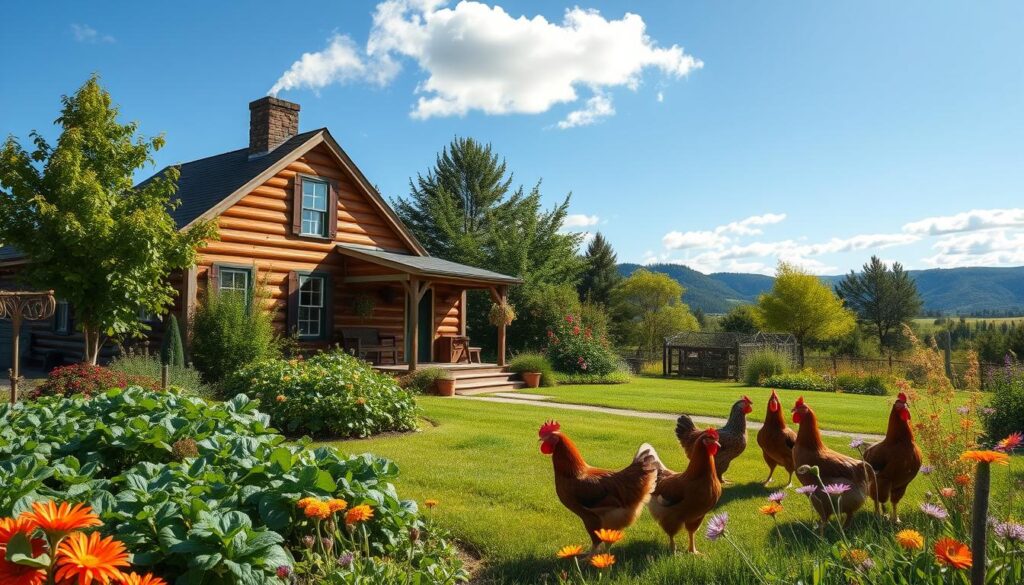
“Homesteading builds a strong work ethic in individuals, with children as young as six or seven expected to perform essential tasks on the homestead.”
The advantages of homesteading, like food security, saving money, and better health, must be balanced with the challenges. Choosing homesteading means thinking deeply about your own life and goals.
Examples of Homesteading Lifestyles
Homesteading isn’t just about owning a lot of land or living far away. Today, it’s about making the most of where you live, no matter the size or budget. Let’s look at the different ways people homestead:
Urban Homesteading
Urban homesteaders use small spaces like balconies or rooftops for gardens and animals. They also compost and do DIY projects. This way, they live sustainably in the city.
Suburban Homesteading
Suburban homesteaders have more room to grow gardens and keep animals. They also can can food, preserve it, and improve their homes. It’s a mix of living well and being self-sufficient.
Rural Homesteading
Rural homesteaders have big plots of land for farming and living off the grid. They focus on livestock and growing many crops. They also use renewable energy to be more independent.
Every homesteading type shares a goal: to live sustainably and self-sufficiently. Whether in the city, suburbs, or countryside, homesteaders aim to be closer to nature. They want to lessen their environmental impact and control their food and resources.
Homesteading and Insurance Considerations
Living a self-sufficient life means you might need to think about your insurance. If you’re raising animals, building new structures, or buying special equipment, your homeowner’s insurance might need to change. Renters who grow food or keep animals should look into extra liability coverage too.
Homeowners and Renters Insurance
Homeowners insurance usually covers your home, stuff inside, and protects you if someone gets hurt. But, if you’re into homesteading, you might need more coverage. Homesteading insurance can make sure your property, animals, and farm gear are safe.
For renters, renter’s insurance for homesteading is key to protect against risks like animal injuries or damage from farm work. This kind of insurance can cover injuries or damage to others’ property.
Talking to your insurance company about your homesteading plans is a must. They can help you find the right coverage for your needs. This way, you can enjoy your homesteading life safely.
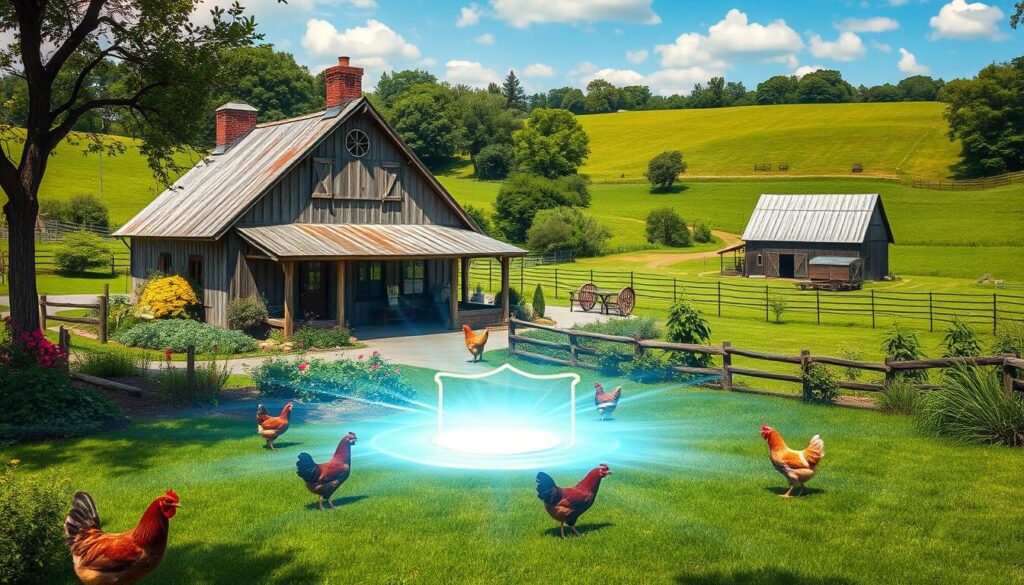
“Proper insurance coverage is crucial for homesteaders, as it can help safeguard your investment and way of life.”
Homesteading and Mortgages
Living the homesteading life means you might need to get a mortgage for your property and other costs. When looking at homesteading and mortgages, think about zoning laws, homeowners association rules, and how to prove your income. These things can make getting homesteading property financing tricky.
It’s smart to talk to a real estate agent or mortgage broker who knows about homesteading. They can guide you through local laws and help with planning for appraisals and refinancing. Knowing how homesteading and property valuation work is key to getting the right financing for your homestead.
“Having a business plan in place, including costs for housing, outbuildings, animals and building gardens or planting crops is encouraged before spending all cash on raw land.”
Many homesteaders will need to borrow money for their property and expenses. Getting a mortgage is a common choice, but look for programs made for homesteaders. These programs might be more flexible with loan sizes, land limits, and what you can build.
Homesteaders can also look into other ways to finance, like owner financing, personal loans, and grants. By exploring different homesteading property financing options, you can find the best way to make your homesteading dreams come true.
Embracing a New Lifestyle
Homesteading is a journey of self-discovery. It lets you shape your life to fit your interests and goals. You can start with a few herbs or aim for a sustainable farm. The key is to know your options and make a plan that suits your budget and lifestyle.
Planning for Homesteading Success
Homesteading takes time, effort, and a willingness to learn new skills. Start small and focus on what you love. Then, grow your homesteading goals and skills over time. Planning and starting homesteading thoughtfully helps you build a fulfilling life that matches your values.
To begin, think about these steps:
- Identify your homesteading goals and decide which skills to learn first, like gardening, canning, or managing livestock.
- Look at your living situation and what resources you have, whether you’re in a city, suburb, or countryside.
- Begin with a few homesteading activities and get good at them before adding more.
- Join local homesteading groups to learn from experts and get support.
- Be kind to yourself and celebrate your achievements, as homesteading is a journey of continuous learning and growth.
By embracing homesteading and planning your journey, you can live a more self-sufficient, rewarding, and eco-friendly life.
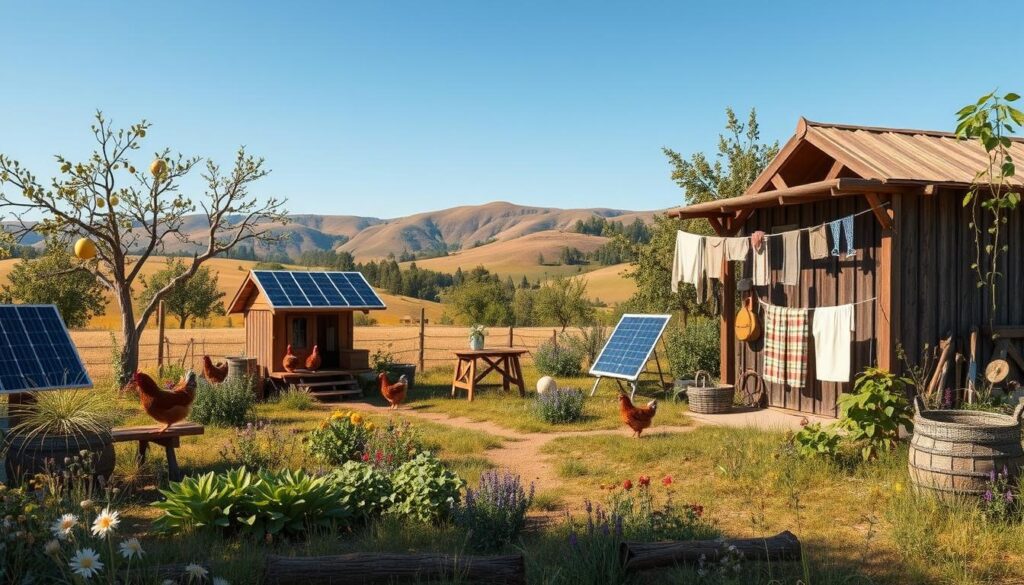
Homesteading in Retirement
Retirement is a chance to live more independently, and homesteading is a great way to do that. It offers financial freedom and a sustainable lifestyle. Homesteading lets you live with family across generations and host friends and family, creating memories that last.
Retirement homesteading can also help you earn money. By growing your own food and making things by hand, you can stretch your retirement budget. In fact, many people over 55 are starting farms with their savings, turning their retirement into a second career.
But, making money from farming in retirement can be hard and not always steady. For example, selling dairy products might be tricky due to rules. Still, with good planning, retirees can live well and sustainably.
When looking at homesteads, think about how close they are to things you need like doctors, schools, and stores. The right homestead should balance being self-sufficient with easy access to these things.
“Homesteading for retirement may involve raising cattle, sheep, goats, rabbits, and chickens, each requiring daily care. Different forms of homesteading pursuits include market gardening, flower farming, raising animals for sale, and growing food for household consumption.”
Homesteading in retirement means living a more meaningful and happy life. It lets you earn extra and stay active, keeping you feeling purposeful. A study by the Nationwide Retirement Institute showed that 97% of retirees with purpose felt happy, compared to 76% without it.
Finding the Right Homesteading Property
Looking for a homesteading property means thinking about many things. Climate, access, and natural resources are key. They help make your self-sufficient dream come true.
Considerations for Homesteading Properties
When picking a homesteading property, remember these important points:
- Climate and Accessibility – Check the property’s climate and how easy it is to get to utilities. Make sure it has good road access and reliable internet all year.
- Soil Quality and Natural Resources – Look at the soil to see if it’s good for crops and animals. Having natural water, forests, and other resources makes homesteading better.
- Zoning and Regulations – Find out about local laws to make sure your homesteading plans are okay. Some places don’t allow certain activities or buildings.
- Property Size and Layout – Think about how big the property is and how it’s laid out. It should fit your homesteading needs, like farming, animals, and living spaces.
- Proximity to Amenities – See how close the property is to things like grocery stores and hospitals. Being close to these can be important in emergencies.
Thinking about these things helps you find the right homesteading property. It matches your dream of living self-sufficient.
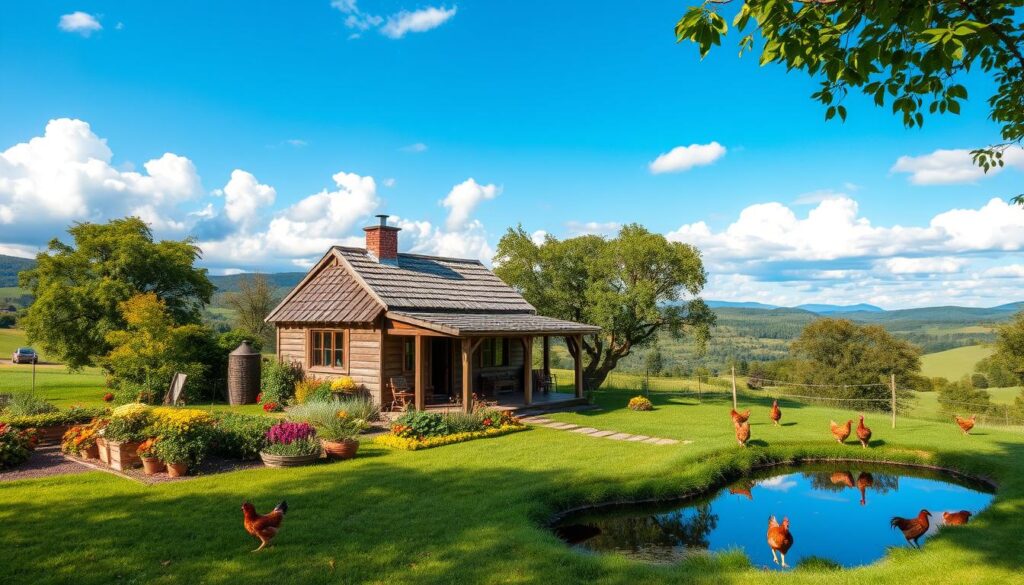
“Researching and evaluating homesteading properties is a crucial step in ensuring your transition to a self-sufficient lifestyle is a smooth and successful one.”
Upsizing for Multi-Generational Living
When homesteaders retire, upsizing their homes can be a great option. It’s perfect for multi-generational living, allowing family and friends to come together. But, it’s important to think about things like physical abilities and everyone’s needs.
Planning finances is key when thinking about a bigger homestead. The cost of living and limited homes in places like Colorado make it tough. Yet, being proactive and getting advice from experts can help. This way, homesteaders can reach their goals and live better.
It’s smart to update a 5-year plan for your home often. This ensures your homestead fits your family’s changing needs. It’s all about being flexible, not just downsizing or upsizing. Planning ahead lowers stress and makes living together easier.
Choosing to upsize for multi-generational living has many perks. It helps with financial independence and lets you host loved ones. By doing this, homesteaders build a strong, connected community at home. It strengthens family ties across generations.
Creating Comfortable Spaces for Visitors
Welcoming guests to your homestead means making sure they feel at home. Think about setting up special areas for homestead guest accommodations and homestead visitor spaces. This could be a guest bedroom or even folding beds in the living room. Make sure these spots offer privacy and enough storage for your guests.
Don’t forget about outdoor fun too. Adding things like outdoor seating, umbrellas, and fire pits makes the homestead more enjoyable. These features let your guests enjoy the outdoors without feeling crowded inside. By doing this, you make sure everyone leaves with happy memories.
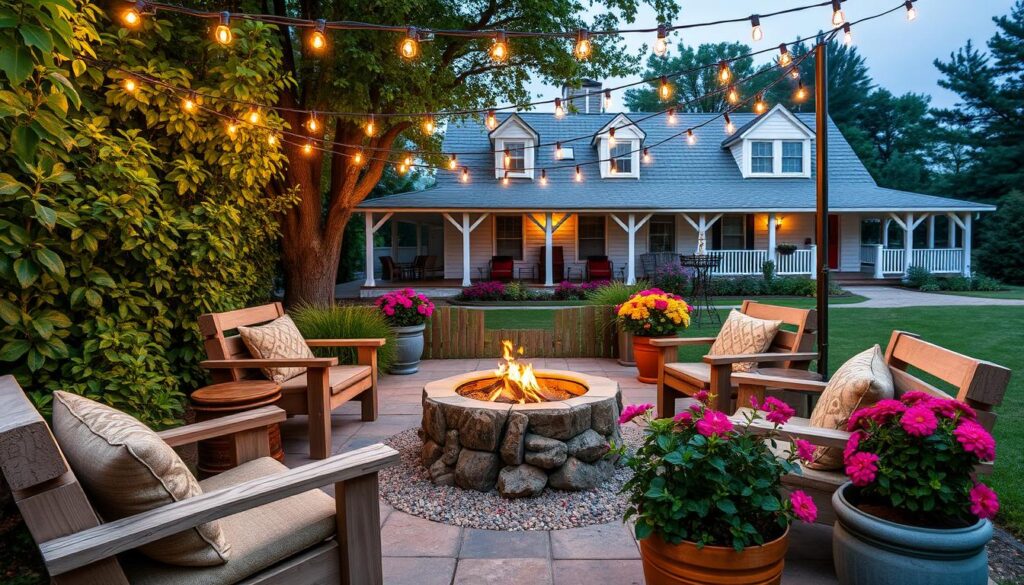
“Creating a sense of hygge, the Danish concept of comfort and coziness, can transform your homestead into a warm and welcoming oasis for guests.”
To make your homestead unforgettable, think about what your guests need and want. Design both indoor and outdoor areas with their comfort in mind. This way, your guests can relax and enjoy the homesteading lifestyle fully.
Embracing Retirement on a Homestead
Retiring to a homestead means living life your way. You’re free from city life’s rules and expectations. You can spend your days doing what you love, like trying new hobbies or enjoying nature walks.
The homestead helps you be financially independent. You can make your own energy, cut down on grocery costs, grow your own food, and sell handmade items for extra cash.
Reverse mortgages let retirees use their home’s value to buy a bigger place without monthly bills. It’s important to check the land for homesteading. Make sure it has enough water, good soil, and no pollutants.
Starting a business on your homestead can turn your farming or gardening hobby into a money-maker.
Getting involved in your community is key when homesteading. Join groups or go to workshops to learn new skills. Using digital PDFs for your homestead paperwork keeps everything safe and easy to reach.
“We initially intended for a small cabin in the woods, but it expanded to accommodate a larger house for writer’s retreats,” shared Kathi Lipp, who owns 33 acres in rural northern California near Lake Tahoe.
Kathi and her husband Roger faced challenges like bears in their chicken coops and heavy snow. But, the joys of homesteading in retirement made it all worth it for them.
Homesteading
Homesteading is a way of life that includes many skills and activities. It ranges from growing gardens to preserving food. People who start homesteading join a homesteading community. They share knowledge and learn from each other.
Homesteading means wanting to be self-sufficient. It means using what you make or grow instead of buying it. Skills like gardening, taking care of animals, and fixing things at home are key. These skills are becoming more popular as people want a simpler, more meaningful life.
There are many homesteading resources out there, like books, online groups, and local clubs. These can help new homesteaders a lot. They offer advice and support, helping people live self-sufficient lives. This builds a stronger bond with the earth and with others in the community.
“Family unity and development are best attained when family activities are centered around concerns directly linked to the preservation and welfare of the family group.” – Rural Roads to Security, 1939
Today, homesteading is becoming popular again. It offers a chance to be more independent and live a simpler life. Joining the homesteading community and using homesteading resources can lead to a more self-reliant and rewarding life.
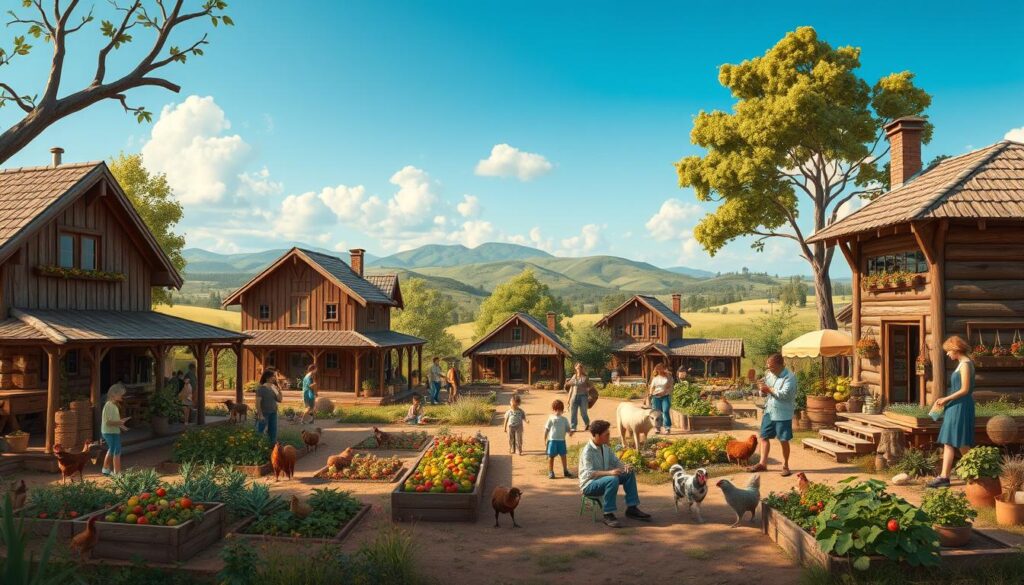
Conclusion
The homesteading lifestyle is fulfilling and rewarding. It helps people connect deeply with nature. It also ensures food security, saves money, and builds skills.
Starting small with gardening or aiming for a full off-grid homestead is possible. The journey can match your living situation and goals.
With planning, determination, and a desire to learn, anyone can start homesteading. This lifestyle is gaining popularity as people seek sustainable living. They want to be independent from traditional food sources.
Joining a homesteading community helps with tasks, sharing resources, and emotional support. This way, you can overcome the challenges of this fulfilling life.
The homesteading lifestyle leads to a balanced, self-reliant, and eco-friendly life. It’s a great choice for those wanting a sustainable and self-sufficient life.
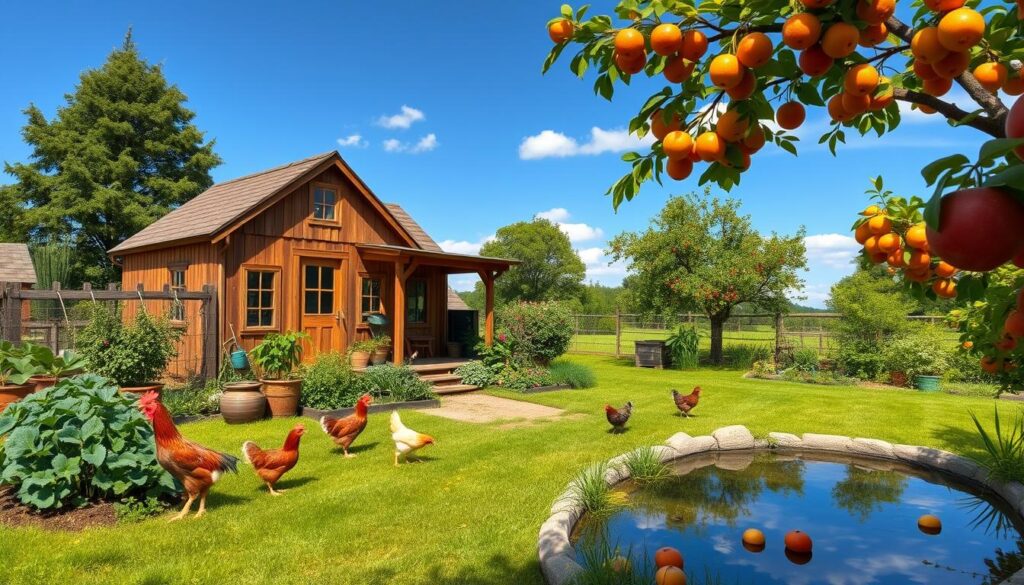
Возможные причины проблем с подключением к точке доступа https://e-pochemuchka.ru/vozmozhnye-prichiny-problem-s-podklyucheniem-k-tochke-dostupa/
Fantastic site you have here but I was curious if you knew of any discussion boards that cover the same topics discussed in this article? I’d really like to be a part of community where I can get advice from other experienced people that share the same interest. If you have any suggestions, please let me know. Thanks a lot!
Hmm is anyone else experiencing problems with the images on this blog loading? I’m trying to determine if its a problem on my end or if it’s the blog. Any responses would be greatly appreciated.
Wyoming Valley Equipment LLC
мтс домашний интернет
https://www.jobassembly.com/companies/andonovproltd5096/
мтс новосибирск
мтс домашний интернет новосибирск
https://sportworkplace.com/employer/honline3718/
мтс новосибирск
мтс подключение екатеринбург
https://convia.gt/employer/inetrnet-domashnij-ekb-3/
мтс подключение
мтс тарифы екатеринбург
https://powerstack.co.in/employer/inetrnet-domashnij-ekb/
мтс домашний интернет
мтс тарифы екатеринбург
https://adsall.net/profile/lanora39w10151
мтс домашний интернет екатеринбург
мтс интернет
https://mhealth-consulting.eu/employer/inetrnet-domashnij-ekb-2/
мтс тв
мтс тв екатеринбург
https://www.stormglobalanalytics.com/employer/inetrnet-domashnij-ekb-3/
мтс екатеринбург
мтс интернет
https://jobs.ethio-academy.com/employer/inetrnet-domashnij-ekb/
мтс екатеринбург
мтс подключение екатеринбург
https://fourci.com/employer/inetrnet-domashnij-ekb/
мтс тв
мтс екатеринбург
https://cumbriasearch.co.uk/companies/inetrnet-domashnij-ekb-2/
мтс домашний интернет екатеринбург
мегафон телевидение
https://ekb-domasnij-internet-2.ru
мегафон екатеринбург
мегафон подключение
https://ekb-domasnij-internet-3.ru
мегафон подключить
мегафон тв екатеринбург
https://ekb-domasnij-internet.ru
провайдер мегафон
билайн тарифы краснодар
https://infodomashnij-internet-krasnodar-2.ru
билайн подключение краснодар
билайн интернет краснодар
https://infodomashnij-internet-krasnodar-3.ru
билайн подключение
билайн тарифы краснодар
https://infodomashnij-internet-krasnodar.ru
билайн тарифы на интернет
билайн краснодар
https://plus-domashnij-internet-krasnodar-2.ru
билайн тарифы краснодар
билайн домашний интернет краснодар
https://plus-domashnij-internet-krasnodar.ru
билайн домашний интернет
билайн тв краснодар
https://plus-domashnij-internet-krasnodar-3.ru
билайн домашний интернет
билайн подключить краснодар
https://plus-domashnij-internet-krasnodar-2.ru
билайн тв краснодар
билайн подключить
https://plus-domashnij-internet-krasnodar.ru
билайн тарифы краснодар
провайдер билайн
https://plus-domashnij-internet-krasnodar-3.ru
провайдер билайн
билайн телевидение краснодар
https://plus-domashnij-internet-krasnodar-2.ru
билайн интернет
билайн домашний интернет
https://plus-domashnij-internet-krasnodar.ru
сайт билайн краснодар
билайн тарифы краснодар
https://plus-domashnij-internet-krasnodar-3.ru
билайн подключение
провайдер мегафон
мегафон домашний интернет екатеринбург
мегафон тарифы екатеринбург
мегафон тв
https://plus-ekb-domasnij-internet-2.ru
мегафон подключить екатеринбург
мегафон интернет
https://plus-ekb-domasnij-internet-3.ru
мегафон подключение екатеринбург
провайдер мегафон
мегафон телевидение екатеринбург
мегафон тарифы на интернет
мегафон екатеринбург
https://plus-ekb-domasnij-internet-3.ru
мегафон подключить
мегафон телевидение
мегафон тарифы на интернет
мегафон интернет
мегафон подключение екатеринбург
https://plus-ekb-domasnij-internet-2.ru
мегафон домашний интернет екатеринбург
мегафон тв екатеринбург
https://plus-ekb-domasnij-internet-3.ru
мегафон тв екатеринбург
провайдер билайн
https://21fun.app/employer/emmanuel/
провайдер билайн
мтс кемерово
http://retailjobacademy.com/employer/margarette/
мтс телевидение
билайн подключение
https://sb.mangird.com/employer/analisa/
билайн тв кемерово
ттк телевидение
https://jobs.quvah.com/employer/ttk-tarif-and-co/
ттк тв
провайдер мтс
https://karis.id/employer/rosaria/
мтс телевидение
ттк телевидение ростов
https://es-africa.com/employer/felisha/
ттк тв ростов
сайт билайн кемерово
https://experts.marketchanger.gr/el/employer/jonathon/
билайн подключение кемерово
билайн домашний интернет
https://www.complete-jobs.com/employer/franklin
провайдер билайн
мтс домашний интернет
https://amigomanpower.com/employer/milford/
мтс интернет
мтс тв
https://www.anetastaffing.com/employer/theresa/
мтс телевидение
ттк интернет
https://muwafag.com/compani/ttk-tarif-llc
ттк тарифы на интернет
ттк телевидение
https://www.inclusivehires.com/companies/brenna/
ттк телевидение
провайдер билайн
https://sb.mangird.com/employer/analisa/
билайн тв кемерово
мтс домашний интернет
https://amigomanpower.com/employer/milford/
мтс домашний интернет кемерово
ттк подключение
https://analyticsjobs.in/jobs/companies/ttk-tarif/
ттк телевидение
ттк тарифы на интернет
https://www.opad.biz/employer/ttk-tarif-consulting/
ттк домашний интернет
ттк подключить
https://jobportal.kernel.sa/employer/arnette/
ттк домашний интернет ростов
ттк тв ростов
https://theboss.wesupportrajini.com/employer/fermin/
ттк ростов
билайн подключение кемерово
https://www.vieclam.jp/employer/barb/
билайн домашний интернет кемерово
мтс тарифы кемерово
https://nytia.org/employer/rubin/
мтс тарифы кемерово
ттк барнаул
https://elitevacancies.co.za/companies/ttk-tarif-solutions/
ттк тв барнаул
ттк домашний интернет
https://nepalijob.com/companies/valentin/
ттк телевидение ростов
билайн интернет
https://workbook.ai/employer/maik/
провайдер билайн
мтс телевидение
https://www.emploitelesurveillance.fr/employer/philip/
мтс домашний интернет кемерово
Balanceo dinamico
Dispositivos de balanceo: fundamental para el desempeño suave y eficiente de las dispositivos.
En el entorno de la tecnología avanzada, donde la productividad y la estabilidad del equipo son de suma trascendencia, los aparatos de calibración tienen un papel crucial. Estos sistemas dedicados están diseñados para ajustar y regular elementos giratorias, ya sea en maquinaria industrial, automóviles de desplazamiento o incluso en equipos de uso diario.
Para los profesionales en reparación de aparatos y los especialistas, manejar con equipos de balanceo es esencial para promover el funcionamiento estable y confiable de cualquier mecanismo móvil. Gracias a estas soluciones tecnológicas avanzadas, es posible minimizar significativamente las movimientos, el sonido y la tensión sobre los sujeciones, prolongando la duración de piezas importantes.
También importante es el tarea que desempeñan los sistemas de balanceo en la servicio al usuario. El soporte profesional y el reparación constante utilizando estos equipos facilitan brindar servicios de gran nivel, aumentando la contento de los consumidores.
Para los titulares de emprendimientos, la inversión en equipos de balanceo y dispositivos puede ser esencial para optimizar la eficiencia y eficiencia de sus sistemas. Esto es especialmente relevante para los empresarios que administran medianas y pequeñas organizaciones, donde cada punto vale.
También, los aparatos de ajuste tienen una vasta aplicación en el sector de la prevención y el monitoreo de estándar. Facilitan identificar eventuales fallos, impidiendo mantenimientos elevadas y daños a los aparatos. Incluso, los información recopilados de estos equipos pueden aplicarse para maximizar procedimientos y potenciar la presencia en buscadores de consulta.
Las zonas de aplicación de los dispositivos de calibración abarcan múltiples sectores, desde la fabricación de bicicletas hasta el seguimiento del medio ambiente. No influye si se considera de importantes elaboraciones de fábrica o modestos talleres domésticos, los equipos de equilibrado son necesarios para asegurar un desempeño óptimo y sin riesgo de interrupciones.
ттк тарифы барнаул
https://www.pinnaclefiber.com.pk/employer/ttk-tarif-ltd/
ттк тарифы барнаул
провайдер ттк
https://www.valenzuelatrabaho.gov.ph/employer/fanny/
ттк тарифы ростов
equilibrando
Equipos de balanceo: fundamental para el rendimiento suave y óptimo de las maquinarias.
En el entorno de la ciencia moderna, donde la productividad y la seguridad del sistema son de máxima significancia, los equipos de balanceo cumplen un función crucial. Estos aparatos especializados están concebidos para equilibrar y asegurar elementos dinámicas, ya sea en herramientas manufacturera, medios de transporte de desplazamiento o incluso en aparatos caseros.
Para los profesionales en reparación de aparatos y los técnicos, utilizar con equipos de calibración es importante para garantizar el operación fluido y estable de cualquier mecanismo móvil. Gracias a estas soluciones innovadoras innovadoras, es posible minimizar considerablemente las vibraciones, el ruido y la tensión sobre los soportes, extendiendo la longevidad de piezas importantes.
Asimismo relevante es el rol que cumplen los dispositivos de balanceo en la atención al comprador. El soporte profesional y el reparación continuo empleando estos equipos facilitan proporcionar prestaciones de alta nivel, mejorando la contento de los compradores.
Para los responsables de proyectos, la financiamiento en unidades de calibración y sensores puede ser esencial para mejorar la rendimiento y desempeño de sus aparatos. Esto es sobre todo significativo para los emprendedores que manejan medianas y intermedias organizaciones, donde cada aspecto importa.
Por otro lado, los aparatos de calibración tienen una gran uso en el área de la protección y el control de estándar. Permiten identificar posibles fallos, evitando arreglos onerosas y problemas a los sistemas. Además, los resultados generados de estos dispositivos pueden utilizarse para perfeccionar métodos y mejorar la visibilidad en plataformas de búsqueda.
Las zonas de uso de los sistemas de equilibrado cubren múltiples ramas, desde la producción de ciclos hasta el seguimiento ecológico. No importa si se habla de enormes manufacturas de fábrica o modestos espacios domésticos, los dispositivos de ajuste son indispensables para promover un funcionamiento eficiente y libre de paradas.
Jante Rimnova
Jante Rimnova
娛樂城,通常指的是一個線上賭博平台,提供各種娛樂遊戲,如賭場遊戲、體育博彩、電子遊戲等。這些平台讓玩家可以在網路上進行賭博,而不需要親自前往實體賭場。娛樂城通常包含了各式各樣的遊戲選項,例如百家樂、輪盤、老虎機、撲克等,並且透過即時娛樂、直播等技術,提升了玩家的沉浸感和互動性。現今的娛樂城大多數已經支援手機和桌面端的多平台操作,讓玩家可以隨時隨地參與遊戲,這樣的便利性使得它們受到全球玩家的青睞。此外,娛樂城也會推出不同的優惠活動、註冊獎金和忠誠計劃,吸引新用戶並保持老用戶的活躍度。然而,娛樂城的風險也不可忽視。由於賭博本身具有高度的娛樂性,但也存在可能的成癮問題。多數國家對於線上賭博有著嚴格的法律規範,玩家在選擇娛樂城平台時,應該格外留意平台的合法性和安全性,以避免陷入詐騙或遭遇其他法律風險。因此,理性投注並了解相關法律是每位玩家應該保持的基本態度。
мтс подключить
https://community.cathome.pet/employer/alana5183/
мтс домашний интернет
сайт мтс новосибирск
https://emplealista.com/employer/sung6946/
мтс подключение
мтс интернет
https://jobs.ahaconsultant.co.in/employer/myles9527/
мтс подключение
мтс интернет
https://www.bridgewaystaffing.com/employer/analisa7922/
мтс подключение новосибирск
мтс цены
https://dev-members.writeappreviews.com/employer/gayle2907/
мтс цены
мтс тв екатеринбург
https://hitechjobs.me/companies/inetrnet-domashnij-ekb-2/
мтс телевидение
мтс тв екатеринбург
https://dgijobs.com/employer/24inetrnet-domashnij-ekb-2/
сайт мтс екатеринбург
мтс телевидение
https://creator.chaakri.com/employer/24inetrnet-domashnij-ekb/
мтс домашний интернет екатеринбург
мтс подключение
http://jobsgo.co.za/employer/24inetrnet-domashnij-ekb-3
мтс тв
мтс подключить
http://www.thehispanicamerican.com/companies/24inetrnet-domashnij-ekb/
мтс телевидение
мтс домашний интернет екатеринбург
https://contractoe.com/employer/24inetrnet-domashnij-ekb-3/
мтс подключить
мтс подключить
https://wfsrecruitment.com/employer/24inetrnet-domashnij-ekb-3/
мтс подключение
мтс интернет
https://letsstartjob.com/employer/inetrnet-domashnij-ekb-2/
мтс екатеринбург
戰神賽特
「戰神賽特」— 2025年最火爆的老虎機,等你來挑戰!
如果你正在尋找一款高賠率、刺激又充滿神秘感的老虎機遊戲,那麼「戰神賽特」絕對是你的最佳選擇!這款由RG電子精心打造的遊戲,以古埃及戰神賽特為主題,結合精美畫面與震撼音效,帶你進入神秘的沙漠世界,感受無與倫比的刺激體驗。
為何玩家瘋狂愛上戰神賽特?
超狂賠率 51,000 倍:一轉瞬間,財富翻倍不是夢
高RTP達96.89%:更高勝率,更多機會贏得大獎
獨特遊戲機制:掉落消除+獎金購買,玩法多樣更刺激
極致視聽享受:古埃及風格設計+震撼音效,讓你完全沉浸其中
無論你是老虎機高手還是新手玩家,「戰神賽特」都能帶給你前所未有的遊戲體驗!快來挑戰戰神,贏取屬於你的豐厚獎勵!
Since the admin of this website is working, no hesitation very soon it will be renowned, due to its feature contents.
снятие ломки самара
Pretty section of content. I just stumbled upon your website and in accession capital to assert that I get in fact enjoyed account your blog posts. Anyway I will be subscribing to your feeds and even I achievement you access consistently quickly.
снятие ломки капельницей
戰神賽特
「戰神賽特」— 2025年最火爆的老虎機,等你來挑戰!
如果你正在尋找一款高賠率、刺激又充滿神秘感的老虎機遊戲,那麼「戰神賽特」絕對是你的最佳選擇!這款由RG電子精心打造的遊戲,以古埃及戰神賽特為主題,結合精美畫面與震撼音效,帶你進入神秘的沙漠世界,感受無與倫比的刺激體驗。
為何玩家瘋狂愛上戰神賽特?
超狂賠率 51,000 倍:一轉瞬間,財富翻倍不是夢
高RTP達96.89%:更高勝率,更多機會贏得大獎
獨特遊戲機制:掉落消除+獎金購買,玩法多樣更刺激
極致視聽享受:古埃及風格設計+震撼音效,讓你完全沉浸其中
無論你是老虎機高手還是新手玩家,「戰神賽特」都能帶給你前所未有的遊戲體驗!快來挑戰戰神,贏取屬於你的豐厚獎勵!
мтс интернет екатеринбург
https://www.securityprofinder.com/employer/24inetrnet-domashnij-ekb/
мтс тарифы на интернет